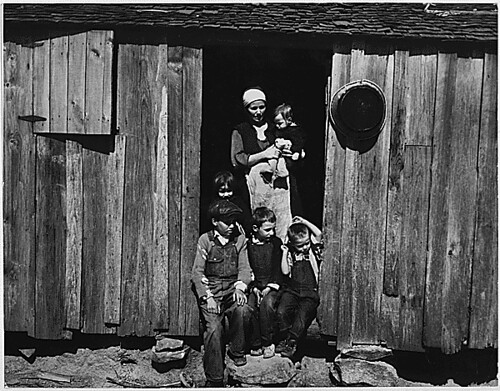After watching the documentaries in class and reading additional resources, I have come to the conclusion that the "First New Deal" (1933-34) was focused more on relief while the "Second New Deal" (1935-37) was focused more on reform and recovery.
The First New Deal
The First New Deal emphasized short-term relief over long-term solutions, but was not harmful in the long-term. This is characterized by acts such as the Unemployment Relief Act, passed in March of 1933. The Act put young men to work in conservation primarily. While this might seem like a long-term solution, it falls under the category of relief best as it was intended to quickly relieve the economy of unemployment and find a short-term job solution for these men. Another Relief act of the new deal was the famous Agricultural Adjustment Act (AAA). The practices of the AAA were clearly unsustainable in the long term. Farmers destroyed crops in order to keep overproduction at bay, with government compensation for not farming. This is clearly inefficient in the long term, but provides a short term solution to the problem of overproduction at the start of the depression.
Another clearly relief based early New Deal program was the Federal Emergency Relief Act (FERA), passed in May of 1933. The act relieved some unemployment by opening up jobs in local government by granting grants to the state governments. The temporary nature of many of these early New Deal programs was seen in the National Industrial Recovery Act of 1933. The subsequently founded NRA urged temporary measures to alleviate the depression (i.e. minimum wage, child labor regulations, etc.). While not all New Deal programs during its first few years were focused on relief, the vast majority were, and set a clear trend which would continue evolving int he "Second New Deal".
The Second New Deal
The Second New Deal, characterized as beginning in 1935, tended to be more recovery and reform focused than its predecessor in the earlier years of FDR's presidency. Perhaps one of the biggest aspects of the new deal was the Social Security Act. This act was in no way a relief act. It took money out of circulation for future saving, and did not necessarily help the unemployed find jobs. However, it was a monumental reform act. The SSA established a governmental responsibility for worker pensions and compensation in the case of an accident or retirement. The act signified the expanding role of the federal (and in this case also the state) governments in regulating the new American economy. Another important act, the National Labor Relations Act (AKA the Wagner Act), accomplished many of the goals of the early 20th century progressives, and allowed workers to organize and protected some of their rights against extortion by their employers.
Again however, the Second New Deal did have some relief elements. The Emergency Relief Appropriations Act of 1935 was similar to the Unemployment Relief Act passed in 1933, and provided temporary jobs for many Americans (although these were arguably more long-term). This act can also be considered to have some recovery elements through its establishment of public works projects which would reap long-term benefits.
While the New Deal cannot be characterized perfectly into one of the three categories (Relief, Reform, Recovery), we can make an attempt to understand the motivations for each of the acts passed as a part of it. In the end, the New Deal provided a mix of short-term and long-term solutions in appropriate timing, which worked to lift America out of the great depression to some extent.
Sources:
New Deal handout on classroom
Documentaries watched in class
http://content.lib.washington.edu/feraweb/essay.html
https://www.ourdocuments.gov/doc.php?flash=true&doc=67
http://www.history.com/this-day-in-history/fdr-signs-emergency-relief-appropriation-act


